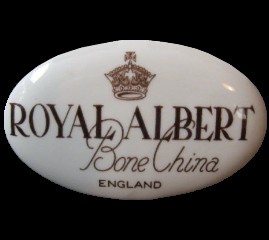There is a wide range of
prices for china.
On-line auction sites such as eBay
have changed the market prices greatly.
China is not worth as much as it was
before as so many discontinued patterns have become so easy to get!
For example, if you are
trying to sell Old Country Roses, Memory Lane , Lavender Rose, or Val Dor...it’s
all about “price” as there is so much of it for sale!!!
I would look at what the completed auctions actually sold for, not
what the bidding started at. Bidding always starts lower to attract more
bidders.
If you see that no one is bidding, then the
price is too high!
It’s always a gamble with on line Auctions, sometimes
you can do very well with a piece and then the next time no one bids on
it!
If you can’t find any thing to compare your pattern
too, try looking at what similar pieces sell for. For an example if you have
an un-named teapot...the look at what other teapot’s in your size are selling
for. Un-named patterns usually sell for less then Named ones.
Some of
the most Rare pieces are the sets with Butterfly handles! Most of those sell for
over $100.00 as set!
You may want to look at selling your pieces individually.
The serving pieces will
sell better by themselves and for more money. If you have a piece that’s hard to find, even in a
popular pattern, it may be a fast seller!
Never split up a teacup
and Saucer “set”.
Don’t mix match...if you don’t have the correct match then
sell them separately.
The only time I would think
about selling a set together is if you had an entire series of something, like
if you had all six of the “Garden Party Series”
But if you don’t have then
entire Series I would sell them separately.
Some very
important things to Keep in Mind:
1. Most people now days are looking
for replacement pieces, not full sets.
2. Most people are also
only looking for pieces in “Excellent” or “Good” condition, if it’s not then
it’s got to have a good price on it!
3. If it’s a “Second” or
not ”Made in England” then make sure you put that in your description. For some
collectors this is very important!
4. Always include a photo of the backstamp
then the buyers will know exactly what they are
purchasing.
5. If a pattern does not
have a name, then don’t give it one! You can say it looks similar to a named
pattern.
6.
If your pattern isn’t named, then write a very good
description!!
Good Luck
Selling!!!!
















































